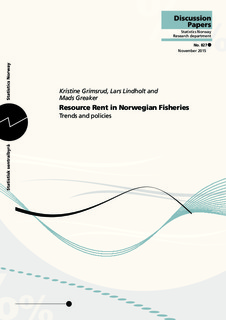| dc.description.abstract | A nation’s natural-resources wealth can be estimated via the System of National Accounts (SNA). Because the values of all parameters entering the calculation are conditional on the existing management regime, the optimal value of the natural resources may be masked. This is the case for the Norwegian fishery sector. Using the SNA the Norwegian fisheries contributed negatively to the actual national wealth in the period 1984-2014 with the exception of 2010-2011. By exploring the development of the actual resource rent for the same time period applying the SNA, we find that the rent has increased over time as a result of a consolidation of the industry. However, the costs of extracting the fish is much higher than necessary, implying that the resource rent is lower than it could have been, and this means that we are in a situation of resource waste. Using a numerical optimization model we find the contra factual resource rent if 2011’s quotas where harvested efficiently with the available technology to be close to 9.3 billion NOK, which is 7 billion NOK more than the observed resource rent in 2011. | en |
